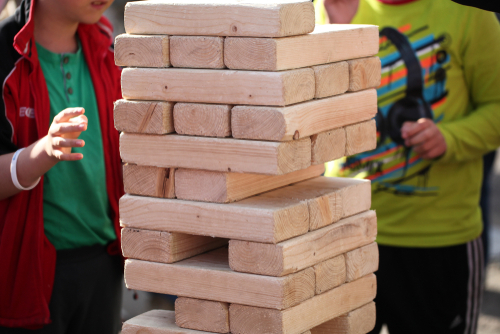What if I told you that anything can be a game? Whether you’re a CEO, a parent, or a teacher, adding an element of play can transform how you lead and manage others. It’s more than just adding fun—play invites creativity, engagement, and collaboration, all of which are essential in making tasks easier and more enjoyable. The secret lies in tapping into game mechanics.
What are Game Mechanics?
Game mechanics are the rules, processes, and elements that form the structure of a game. They’re what make a game work, providing both boundaries and opportunities for creativity. But here’s the beauty: these mechanics aren’t confined to the world of games. You can apply them to nearly any situation, infusing everyday activities with a sense of challenge, exploration, and accomplishment.
Let’s explore how game mechanics can change the way we approach everything from work to family life.
Examples of Game Mechanics:
Here are some simple yet powerful game mechanics you can incorporate into daily life:
- Time Limits: Time-bound challenges create urgency and focus. For example, “You have 30 seconds to organize your desk.” By introducing a countdown, you add excitement and energy to the task.
- Points: Reward systems like points are great motivators. “Every time you complete X task, you earn a point. Collect 10 points and you earn a reward.” It’s an easy way to track progress and celebrate small wins.
- Cooperative Games: This mechanic encourages teamwork. “Everyone has to succeed for anyone to win.” Whether it’s in the office or at home, setting up cooperative challenges fosters collaboration and mutual support.
- Head-to-Head Competition: Sometimes, a little competition is just the spark needed to inspire action. Think of it as “Team A vs. Team B,” where each group is working toward the same goal but with a competitive twist.
- Spinner/Random Chance: Not sure what to tackle next? Let a spinner or dice decide for you! This brings an element of unpredictability that keeps things fresh and exciting. It could be as simple as choosing the next chore or project to work on.
- Choose Your Own Adventure: Who doesn’t love a bit of autonomy? Present choices as part of a larger narrative, where each decision influences the next step. This encourages ownership and keeps the experience engaging.
- Puzzle-Solving: Engage the problem-solving parts of the brain by framing challenges as puzzles. This can be literal (solving a crossword) or metaphorical (finding the best solution to a team issue).
- Campaigns: Like video games where characters level up, use this mechanic to focus on long-term goals with incremental progress. It’s perfect for large projects, where every milestone brings you one step closer to victory.
- Props: Bring in a larger-than-life element of random chance with giant dice or oversized props. This adds a sense of playfulness and novelty to any task and can transform even mundane activities into something memorable.
Why Game Mechanics Work
When people are engaged, they’re more motivated. Game mechanics tap into intrinsic motivation by making everyday tasks more interactive, rewarding, and collaborative. They break down big goals into manageable steps and foster a sense of progress and achievement. Plus, they invite a sense of experimentation—if one approach doesn’t work, try another, just like in a game.
When we reframe tasks as part of a game, they no longer feel like chores. They become opportunities for discovery, connection, and even joy.
Bringing Play into Leadership
Leadership is often seen as serious work, but incorporating play can transform how you manage people and processes. Whether it’s encouraging cooperation through group challenges or using a point system to celebrate achievements, game mechanics can help you foster a positive, dynamic environment. When people enjoy the process, they’re more likely to excel.
